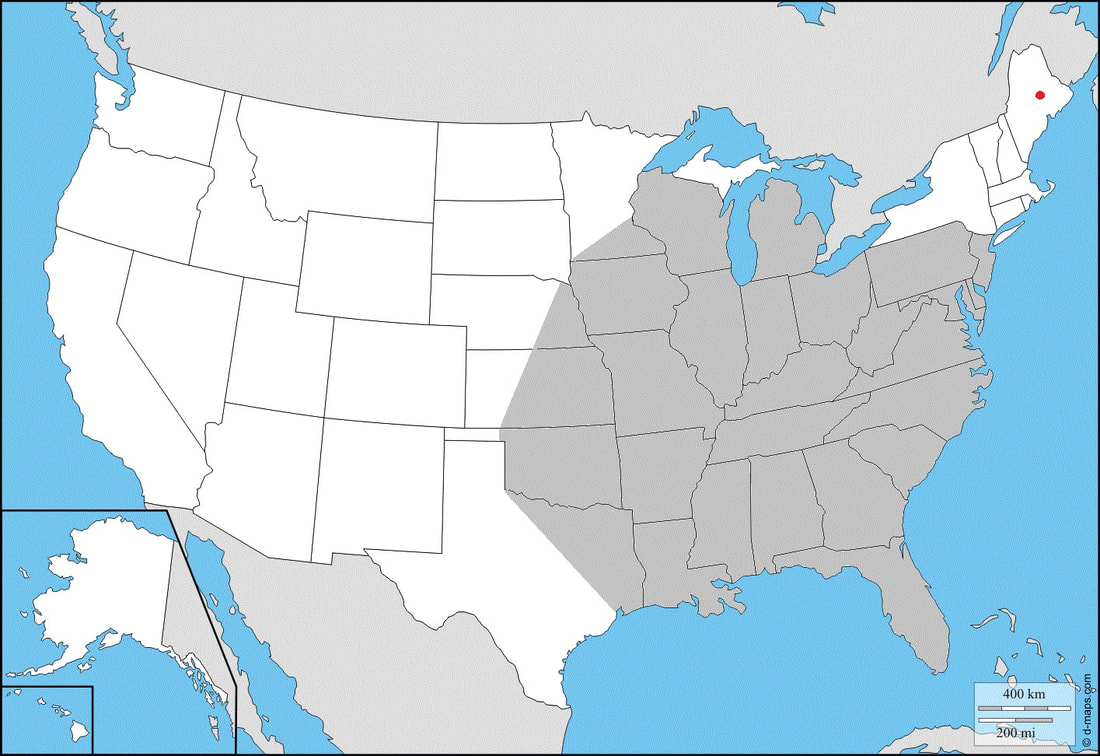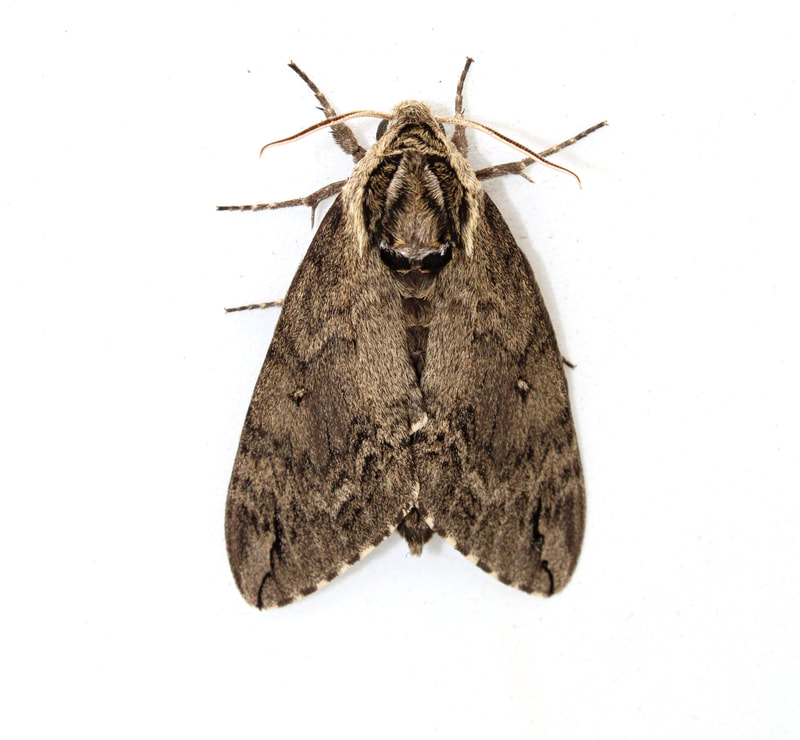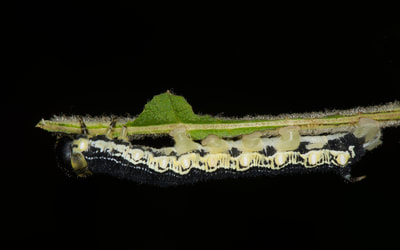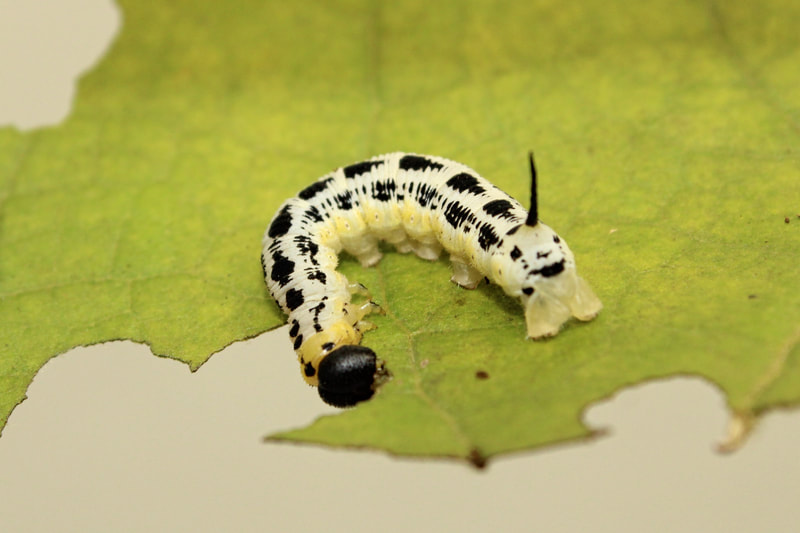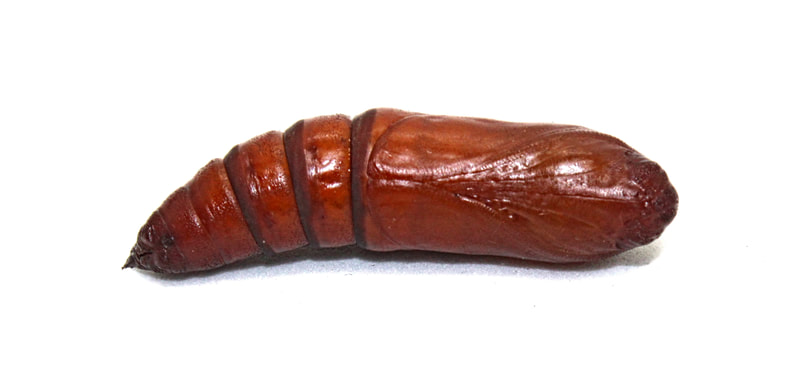|
Common Name: Catalpa Sphinx
Ecology and Life History: Adults are on the wing from May to October in the Northeast, lingering into November further south, and practically year-round in the Deep South. Adults are strongly attracted to light. They do not feed, so both sexes readily come to lights of any sort. Females are less common than males at light. Females are rounder than males, having a more rotund abdomen that ends in a blunt circle. Males are skinny and triangular shaped, with a conical abdomen. Eggs are laid in large clumps on the upper sides of host leaves. The larvae are gregarious, with hundreds feeding on the same tree. As such, they are often attacked by parasitic Braconidae. Unlike many other Sphingidae that start out gregarious, these larvae remain as such throughout their entire larval development. If you happen upon a caterpillar on a catalpa tree, take another look, there may very well be many more! This larva goes through many changes throughout its development. In its final instar, the black dorsal and side markings can vary greatly by individual. They are still unmistakeable for this species. Interestingly, due to this species abundance, many people in the Southeast use the larvae as bait for fishing. Habitat and Searching for Larvae: This species prefers Catalpa Trees over all else. They are found on any decently sized Catalpa, and large trees are often home to dozens of larvae. Keep in mind that they are gregarious and lay eggs in large clumps, the tree must be large enough to support this, they will likely not lay on small saplings. This is a species that inhabits suburban yards and fencerows where Catalpa is plentiful. They are frequently a “yard” species for many people in the Southeast. Larvae are found from June through October in the Northeast, and present throughout the growing season in the South. In the deep south, this larva can be found year-round. This larva does not fluoresce very well under UV light. Rearing Notes: This is absolutely the easiest Ceratomia species to rear. Obtaining eggs can be done by placing the female in a paper bag with Catalpa leaves. Alternatively, she can be sleeved on a Catalpa branch. In captivity, the larvae seem to only accept Catalpa. Due to their gregarious nature, they are not sensitive to crowding, nor develop the diseases generally associated with overcrowding. This species cannot handle high humidity, especially when in sealed tupperware. It is best to sleeve the larvae, or rear them in aquariums with screen lids. Unfortunately, Catalpa does not hold well when cut. Pupation is easy and best achieved by using the paper towel method. If soil is to be used, offering the larvae a 5 gallon bucket that is half-filled with substrate is more than sufficient. Host plants: Click here to load this Caspio Cloud Database
Cloud Database by Caspio |
Adult Description: This is a medium sized moth, forewing approximately 27-45mm (2). The overall appearance of this moth is drab and brown. There is a gray reniform spot. Some well-marked individuals of this species, can resemble C. undulosa, but the presence of the gray reniform spot rather than bright white helps differentiate. There are black dashes and marks across the forewings that vary in darkness and thickness. The hindwings are a very nondescript brown color. The body is brown with cream lines on the sides.
Larval Description: L1: Early instar larvae are gregarious, feeding in large groups until L4. They are small, with a thin spindly horn. L4: At this stage, the larva is pale green-yellow with black dorsal markings. The dorsal portion of the larva may be white, contrasting with the black markings. Occasionally, the black markings bleed together and form streaks or lines. The horn is thin and spindly, and matches the jet black head capsule. L5: This is a pale, thin larvae with a black, spindly horn. There are black dorsal stripes along the larva, that may occasionally blend together to form splotches. The base color is green-yellow. The dorsal markings are highly variable, sometimes leading to a larva that is primarily black. The easiest way to identify this larva is by the black head capsule and black spindly horn. |
The gallery to the left contains photos of Ceratomia catalpae adults. If you have a photo that you would like to submit to us, please contact us.
The gallery to the right contains photos of Ceratomia catalpae larval and pupal stages. If you have a photo that you would like to submit to us, please contact us.
The gallery to the right contains photos of Ceratomia catalpae larval and pupal stages. If you have a photo that you would like to submit to us, please contact us.


